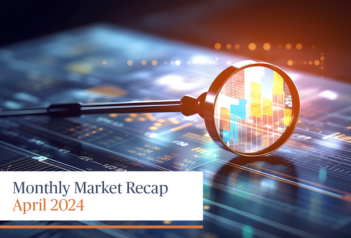Where did my summer go? We are already starting football and soccer practices, band camp and Troop meetings. School hasn’t even started yet!
It’s that time once again to garner items from the school supply list. Thankfully, my wife shops the same day she receives it and does not wait until the week before school starts. Already, there have been several national stories about higher prices and limited supply.
According to the National Retail Federation, families with children in grades kindergarten through 12th will spend an average of $849 this year. That’s $59, or 7.5%, more than last year and a new record.
The latest consumer price index for June was up 5.4% year over year. The Fed’s preferred inflation measure, the Personal Consumption Expenditure or PCE has been above its 2% target for four consecutive months — the latest reading in June was up 3.5% YOY . While Fed officials say price increases will prove to be largely transitory as the economy reopens, they worry that some of the pricing power companies have will stick and potentially damage consumer confidence.
The latest Federal Open Market Committee minutes showed the Fed kept its policies unchanged but was surprised by the stronger-than-expected price increases, as it discussed pulling back economic support sooner than expected — currently $120 billion per month of purchases. Pressed on inflation, Fed Chairman Jerome Powell said the Fed would act if needed increasing interest rates, but at this point inflation still appears transitory.
The word transitory seems so abstract in its definition of how inflationary pressures impact our individual decisions, but also how global central banks will navigate the rest of the decade in a post-COVID world.
We have put forth an inflation framework that we have used to highlight the short and long-term drivers, including (de)globalization and wages. Our thesis and asset allocations have not changed, but we think “frictional” is a better way to call what is happening in the economy.
For example, globalization may have peaked, but it does not mean that decades of global trade are going away tomorrow. Some parts of the supply chains will be relocated to countries that may be friendlier to the U.S. Others may not, given the massive capital investments made over that time.
One part may be manufactured tomorrow and its cost unaffected. Another part may be weeks on back order because of raw materials shortage and its cost may triple. Overall, that price friction may be transitory indeed as measured over a few months just like it may never decrease again.
Similarly, the latest uptrend in U.S. wages has given financial markets another reason to worry that higher inflation may be here to stay. “Hiring” signs are everywhere these days. It is true that employment is still way down from pre-pandemic levels and most jobs being created right now are in industries like restaurants and tourism. While there is a shortage of people ready to work at the going rate of compensation and prompting some to worry that higher wages will drive up business costs, some employees are favoring other perks such as flexible schedules and workspaces over money.
Laws of supply and demand are fully at work. That’s the point, there will be friction for months to come.
If you have any questions or want to have a conversation about the market or your portfolio, please contact Liz, Ed, Fred, Scott, Tyler, or myself. Your Sendero team is ready to help.
Best Regards,
Amaury de Barros Conti
210-930-9409
aconti@sendero.com


